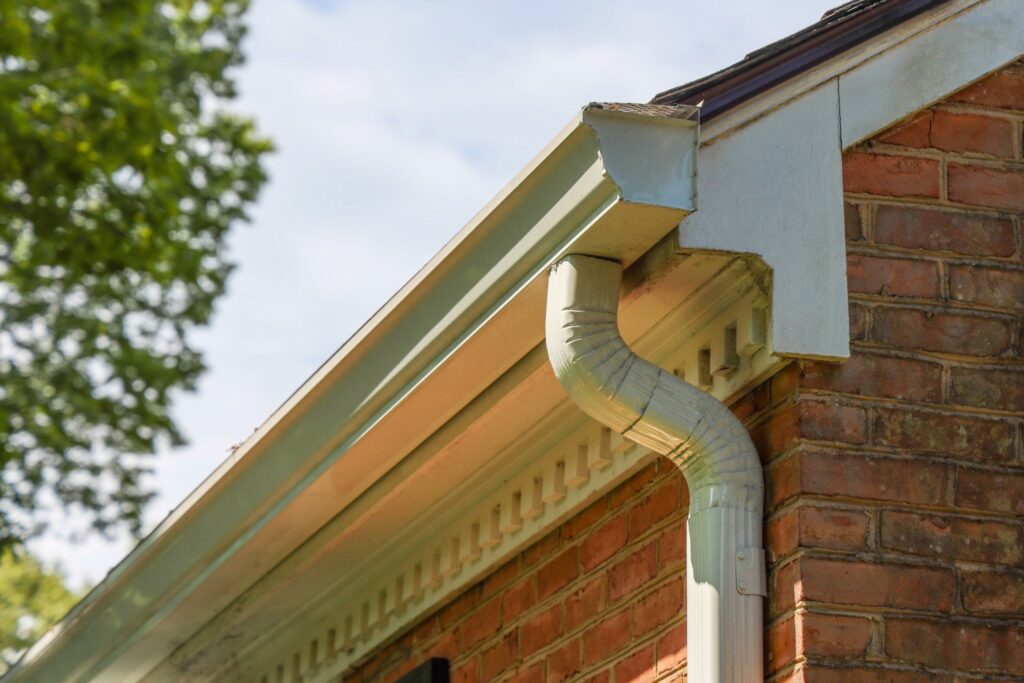A roof gutter, also known as an eavestrough or simply a gutter, is a component of a building’s roof drainage system.
It is a narrow channel or trough, typically made of metal or plastic, that is attached to the edge of a roof and collects rainwater as it flows off the roof.
The gutter then directs the water to downspouts, which carry it away from the building’s foundation and prevent water damage to the building’s walls, basement, and surrounding landscape.
Gutters are an important feature for protecting a building’s structural integrity and should be properly maintained to ensure they function effectively.
Rain gutters here in West Michigan and surrounding areas face a fair amount of challenges. Snow. Ice. Wind. Leaves.
How does ice cause damage to gutters and down spouts?
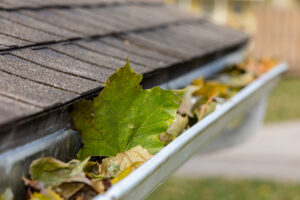
Ice can cause damage to gutters and downspouts in a number of ways. When water accumulates in gutters and downspouts and then freezes, it can create a blockage that prevents the proper flow of water. As a result, water can back up into the roof and cause leaks or damage to the shingles, fascia, or soffit.
The weight of ice can also cause gutters and downspouts to bend or even detach from the roofline. When ice builds up in gutters and downspouts, it can become quite heavy and put a strain on the fasteners holding the gutter in place. This can cause the gutters to sag or even fall off the house.
Additionally, as ice thaws and refreezes, it can cause expansion and contraction in gutters and downspouts, which can lead to cracks and other forms of damage. This can result in water seeping into the walls or foundation of the home, causing further damage.
It is important to keep gutters and downspouts clear of debris and to make sure that water is flowing freely through them, especially during the winter months. Regular maintenance, such as cleaning gutters and downspouts, can help prevent ice damage and prolong the life of your gutter system.
How can snow damage a rain gutter or down spout?
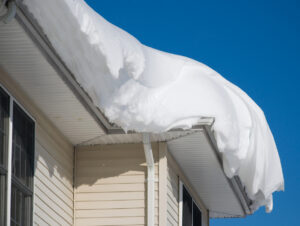
Snow can potentially damage a rain gutter in a few ways:
- Weight: Snow accumulation on the roof can add significant weight, which can cause the gutter to sag or pull away from the roof. This can result in water spilling over the edge of the gutter and potentially causing water damage to the building’s walls or foundation.
- Ice dams: When snow on a roof begins to melt, the water can freeze again when it reaches the edge of the roof or the gutter, forming an ice dam. The weight and pressure from the ice dam can cause the gutter to become dislodged or damaged.
- Freezing and thawing: The freeze-thaw cycle can cause damage to gutters, especially if the water is not able to properly drain away from the gutter. As the temperature drops, any water trapped in the gutter can freeze and expand, which can cause the gutter to crack or become dislodged.
To prevent snow damage to gutters, it is important to keep gutters clear of debris and ensure they are securely fastened to the roof. Additionally, installing heating cables or other snow and ice melting systems can help prevent the formation of ice dams and the resulting damage to gutters.
Gutter Guard is a fantastic solution provided here in West Michigan for keeping gutters free of debri that can potentially clog your gutters. Gutter guard is a screen that gets installed on top of your gutter and allows the water in but nothing else.
How can wind damage my gutters?
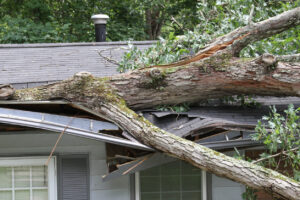
Wind can also potentially damage a rain gutter in several ways:
- Debris: High winds can cause debris such as tree branches, leaves, or other objects to become trapped in the gutter or to strike the gutter, potentially causing it to dent or become dislodged.
- Fasteners: If the gutter is not securely fastened to the roof, strong winds can cause the gutter to detach or become damaged.
- Movement: Wind can cause the gutter to sway or move, potentially causing it to detach or pull away from the roof.
To prevent wind damage to gutters, it is important to ensure that gutters are properly installed with appropriate fasteners and that they are regularly inspected and maintained to ensure they are securely attached to the roof. Keeping nearby trees trimmed and removing any potential debris can also help prevent damage. In areas with frequent high winds, it may be beneficial to install gutter guards to prevent debris from entering and potentially damaging the gutter.
How does Ice affect my rain gutters?
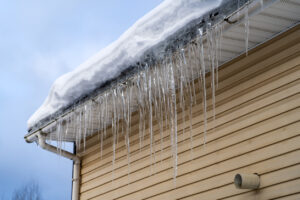
- Ice can potentially cause damage to rain gutters in several ways:
- Ice dams: When snow on a roof begins to melt, the water can freeze again when it reaches the edge of the roof or the gutter, forming an ice dam. The weight and pressure from the ice dam can cause the gutter to become dislodged or damaged.
- Expansion: If water is trapped in the gutter and freezes, the ice can expand and potentially crack or damage the gutter.
- Detachment: If the ice is heavy enough, it can cause the gutter to detach from the roof or become damaged.
To prevent ice damage to gutters, it is important to ensure that gutters are clear of debris and properly secured to the roof. Regularly removing any snow or ice buildup from the roof and gutters can also help prevent the formation of ice dams. Installing heating cables or other snow and ice melting systems can help prevent the formation of ice dams and ensure water can properly drain from the gutter. If ice dams have already formed, it is important to address them promptly by safely removing the ice or contacting a professional for assistance.
